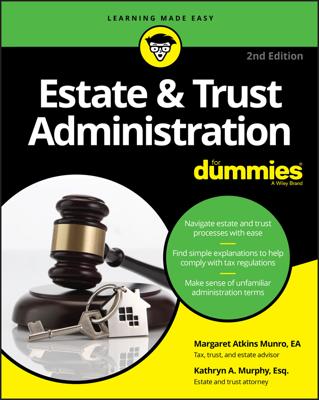Some of the schedules on the United States Estate (and Generation-Skipping Transfer) Tax Return (Form 706) involve complex areas of tax law. Schedules G, H, I, P, Q, R, and U are full of technicalities that make them difficult to complete accurately. If any of these schedules apply to the estate you’re administering, you should contact a qualified expert for help.
The following is a general outline of the more complex schedules found on Form 706. This should help you determine whether or not these schedules apply to the estate you’re administering. Seek professional guidance when dealing with any of the following schedules:
Schedule G: Lifetime transfers
If the decedent transferred property during his or her life for less than full payment, the transfer may be included in his or her taxable estate. Sometimes the decedent knew the property would be included in the estate (for example, if he or she funded a revocable trust).
Occasionally though, power over a transfer the decedent made during life is retained unintentionally, causing the property transferred to be included in the decedent’s estate. Use Schedule G to report these and certain other transfers made within three years of death. This includes taxes on gifts made within three years of death and transfers with certain retained interests.
Schedule H: Powers of appointment
A power of appointment over property is the power to decide who will be the ultimate owner of the property and when. Usually someone other than the decedent creates this power under a will or trust, giving the decedent the authority over the property in question.
Only property controlled by a general power of appointment (which can be exercised to benefit anyone, including the decedent and/or his or her estate) is included on Schedule H: Powers of Appointment. A limited power of appointment never benefits the power holder, so it is not included.
If your decedent had a general power of appointment, report it on Schedule H and list all the property over which the decedent had this power as of his or her date of death.
Schedule I: Annuities
An annuity is an agreement to make periodic cash payments to one or more persons over a specified period. Annuities are subject to estate tax only if payments (or one lump sum payment) continue after the decedent’s death. On Schedule I: Annuities, report the value of any annuity that meets the requirements set out in the Instructions.
Schedule P: Foreign death taxes
Use Schedule P: Credit for Foreign Death Taxes to claim a credit for foreign death taxes paid to a foreign country. This applies only if the decedent is a U.S. citizen or a resident alien, on property situated in the foreign country and subject to estate tax. To receive credit, the foreign tax must be a tax on the transfer of the foreign property at death.
Schedule Q: Prior transfers
In Schedule Q: Credit for Tax on Prior Transfers, you’re allowed a credit for estate taxes paid by a prior estate on property included in this estate.
This credit only applies to transfers to the decedent that happened no more than ten years prior to or two years after his or her death. You may take this credit as long as your decedent was considered the beneficial owner of the property, even if that ownership ended with the decedent’s death.
Schedule R: Generation-Skipping Transfer tax
Assets that skip a generation when transferred are subject to the Generation Skipping Transfer (GST) tax which assesses a tax on property at each generational level as if someone in that generation had owned it.
If the GST tax applies to your estate (or if you’re not sure if it does), contact an expert. You’ll need help preparing Schedules R and R-1 and identifying the skip beneficiaries, and what property they are receiving.
Schedule U: Qualified conservation easement
If your decedent’s estate includes land subject to a qualified conservation easement, you can elect to exclude a portion of this land from the estate. A qualified conservation easement is an easement (allowing others to use your land for a specific purpose) of a qualified real property interest to a qualified organization for conservation purposes. This election, once made, can’t be revoked.

